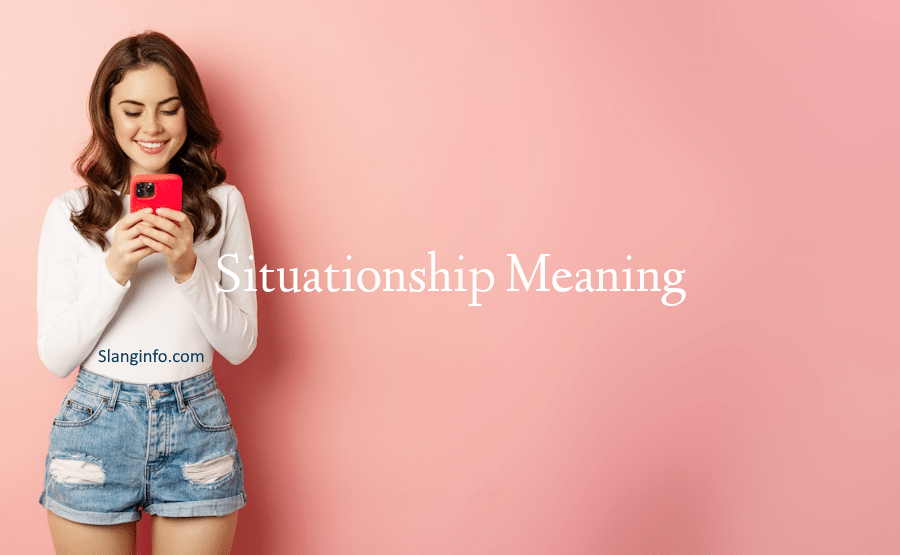In the world of modern dating, a new term has emerged to describe a romantic arrangement that falls somewhere between friendship and a committed partnership: the situationship. This undefined romantic connection has become increasingly common, especially among younger daters who are exploring their options and may not be ready for a full-fledged relationship.
| Key Takeaways |
|---|
| 1. A situationship is an undefined romantic connection |
| 2. It lacks clear commitment or expectations |
| 3. Often involves romantic or sexual activities |
| 4. More than friendship, less than a committed relationship |
| 5. Can be temporary or ongoing |

Origins and Evolution of the Term
The term “situationship” emerged in dating vocabulary as people began to recognize a need for language to describe these ambiguous romantic connections. It’s related to other casual dating terms like “friends with benefits” but carries its own unique connotations.
I first encountered the term “situationship” a few years ago when a friend used it to describe her complicated romantic entanglement. At first, I thought she had misspoken, but as she explained her situation, I realized this new word perfectly captured the gray area she was navigating.
Also read: IGS
Characteristics of a Situationship

So, what exactly makes a situationship different from other types of relationships? Here are some key characteristics:
- Lack of defined relationship status: You’re more than friends, but you haven’t had “the talk” to define what you are.
- Inconsistent communication or plans: Unlike in a committed relationship, there’s no expectation of regular contact or scheduled dates.
- Limited integration into each other’s lives: You might not meet each other’s friends or family, or attend important events together.
- Absence of long-term planning: Conversations about the future are typically avoided or kept vague.
Think of a situationship as a romantic connection that’s stuck in limbo. It’s like being in a relationship without the label or the clear expectations that come with it.
Also read: Mecha Meaning
Why Situationships Happen
There are several reasons why people might find themselves in a situationship:
- Fear of commitment: Some people aren’t ready for the responsibilities of a full relationship.
- Convenience or temporary circumstances: For example, two people might connect while one is temporarily living in a different city.
- Uncertainty about feelings or compatibility: When you’re not sure if you’re right for each other long-term, a situationship can feel like a safe middle ground.
- Desire for freedom and flexibility: Some people enjoy the benefits of a romantic connection without the constraints of a committed relationship.
In my experience as a relationship coach, I’ve seen many clients grappling with situationships. Often, they’re drawn to the freedom and lack of pressure, but struggle with the emotional uncertainty that comes with it.
Pros and Cons of Situationships
Like any romantic arrangement, situationships have their upsides and downsides:
Pros:
- Less pressure and expectations
- Freedom to explore other options
- Can be fun and exciting
- Allows for personal space and independence
Cons:
- Emotional uncertainty
- Potential for misunderstandings
- Risk of unequal feelings developing
- Lack of security and stability
It’s important to weigh these factors carefully when deciding if a situationship is right for you. Remember, what works for one person might not work for another. Just like how some people love using playful internet slang like “KKKK” (a form of laughter) while others prefer more traditional expressions, relationship preferences can vary widely from person to person.## Signs You’re in a Situationship
If you’re unsure whether you’re in a situationship, here are some common signs to look out for:
- You haven’t had a clear conversation about your relationship status
- Your communication is sporadic or inconsistent
- You don’t make long-term plans together
- You haven’t met each other’s friends or family
- Your time together is mostly spent on romantic or sexual activities
If several of these signs sound familiar, there’s a good chance you’re in a situationship. It’s important to trust your gut and have honest conversations with your partner about your feelings and expectations.
Also read: WRYD Meaning
How to Navigate a Situationship

Navigating a situationship can be tricky, but here are some tips to help you through:
- Communicate openly: Have honest conversations about your feelings, expectations, and boundaries.
- Be clear about what you want: If you’re hoping for a more committed relationship, express that clearly.
- Set boundaries: Make sure you’re comfortable with the level of communication and intimacy in your situationship.
- Check in with yourself: Regularly assess your feelings and needs to ensure the situationship is still working for you.
- Be prepared for change: Situationships can evolve into committed relationships or fizzle out. Be open to either possibility.
Remember, the key to any healthy relationship – whether it’s a situationship or something more defined – is clear, honest communication.
Situationships vs. Other Relationship Types
To better understand situationships, it’s helpful to compare them to other types of romantic arrangements:
| Relationship Type | Commitment Level | Emotional Connection | Exclusivity |
|---|---|---|---|
| Situationship | Low | Moderate | Varies |
| Friends with Benefits | Low | Low | Rarely |
| Casual Dating | Low to Moderate | Moderate | Varies |
| Committed Relationship | High | High | Usually |
As you can see, situationships occupy a unique space in the dating landscape. They involve more emotional connection than a friends-with-benefits arrangement, but less commitment than a traditional relationship.
Also read: WWWW Meaning
Conclusion
In today’s complex dating world, situationships have become a common way for people to explore romantic connections without the pressure of a full-fledged relationship. While they can be fun and exciting, they also come with their own set of challenges and uncertainties.
If you find yourself in a situationship, the most important thing is to be honest with yourself and your partner about your feelings and expectations. With open communication and a willingness to embrace the gray areas, you can navigate this modern dating phenomenon with confidence.
Remember, whether you’re in a situationship, a committed relationship, or something in between, the key to romantic happiness is staying true to yourself and what you want. Just like how understanding internet slang like “HBU” (how about you?) can help you communicate more effectively online, understanding your own needs and desires can help you build more fulfilling relationships offline.
So, if you’re considering a situationship, take the time to reflect on what you’re looking for in a romantic connection. With self-awareness and open communication, you can turn the uncertainty of a situationship into an opportunity for growth, self-discovery, and maybe even love.







